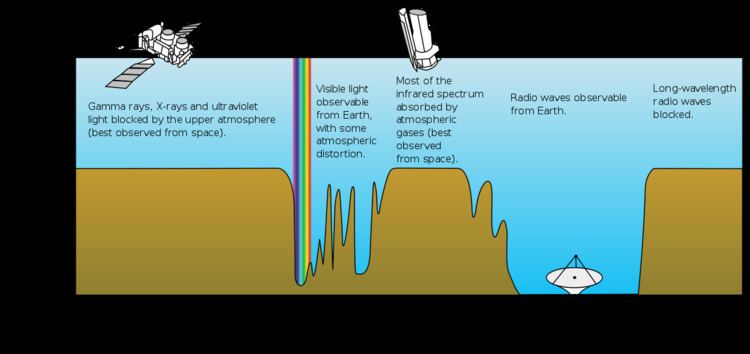 | ||
The waterhole, or water hole, is an especially quiet band of the electromagnetic spectrum between 1,420 and 1,666 megahertz, corresponding to wavelengths of 21 and 18 centimeters respectively. It is a popular observing frequency used by radio telescopes in radio astronomy. The term was coined by Bernard Oliver in 1971. The strongest hydroxyl radical spectral line radiates at 18 centimeters, and hydrogen at 21 centimeters. These two molecules, which combined form water, are widespread in interstellar gas, and their presence radiates radio noise at these frequencies. Therefore, the spectrum between these frequencies form a "quiet" channel in the interstellar radio noise background. Bernard M. Oliver theorized that the waterhole would be an obvious band for communication with extraterrestrial intelligence, hence the name, which is a form of pun: in English, a watering hole is a vernacular reference to a common place to meet and talk. Several programs involved in the search for extraterrestrial intelligence, including SETI@home, search in the waterhole radio frequencies.
